Bright and early the following morning we packed up all our belongings and headed to the airport for a short flight to Luxor.


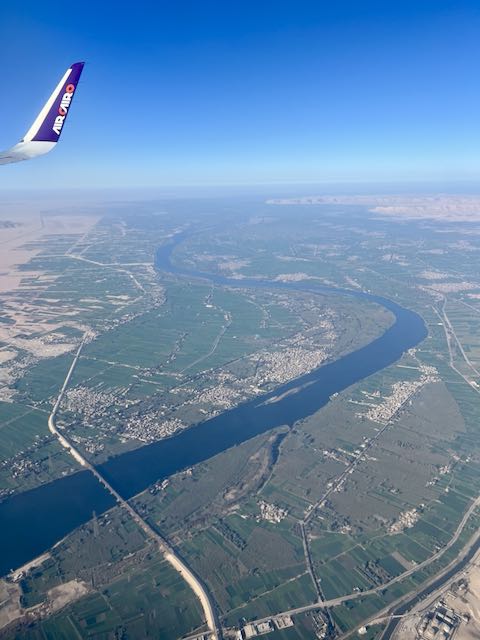
Located on the east bank of the Nile River, in southern Egypt, is the site of ancient Thebes, the pharaohs’ capital at the height of their power, during the 16th–11th centuries BCE. Today, the city surrounds 2 huge, surviving ancient monuments: graceful Luxor Temple and Karnak Temple, a mile north, both of which we will see on this adventure. Luxor is also the stopping off point to visit the royal tombs in the Valley of the Kings and the Valley of the Queens on the river’s west bank.
Upon arrival, even before heading to the ship, we visited the Temple of Karnak.
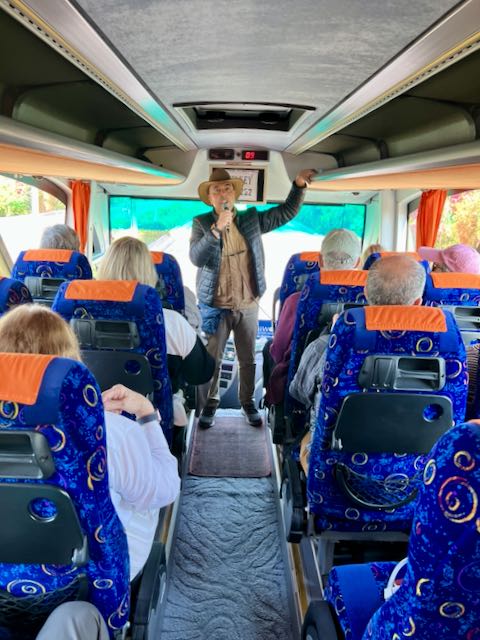
The Karnak Temple Complex, commonly known as Karnak, comprises a vast mix of temples, pylons, chapels, and other buildings. The original name of the temple was Ipet-isut, meaning “The Most Select of Places”. The complex’s modern name “Karnak” comes from the nearby village of el-Karnak, which means “fortified village”.
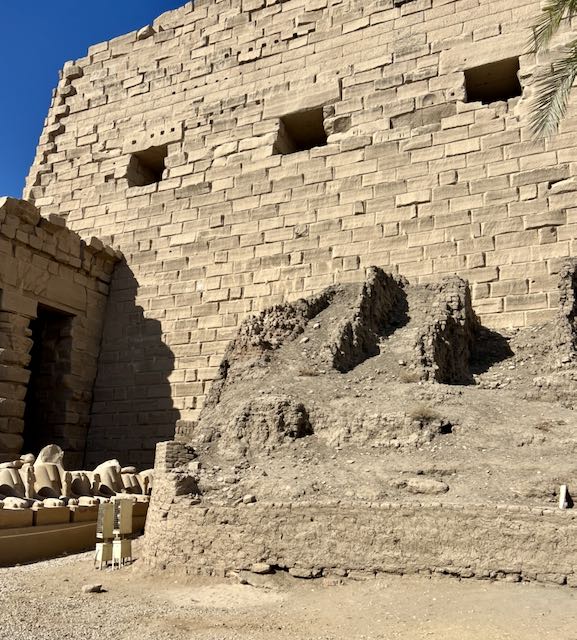
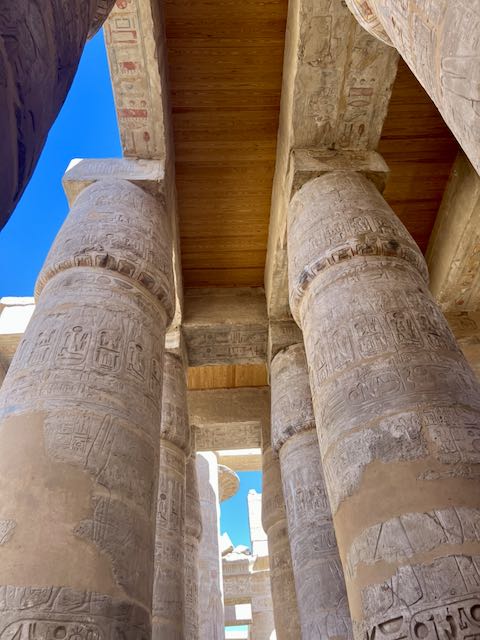
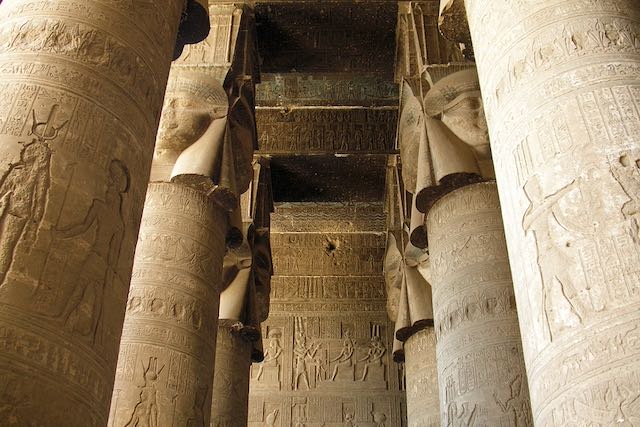

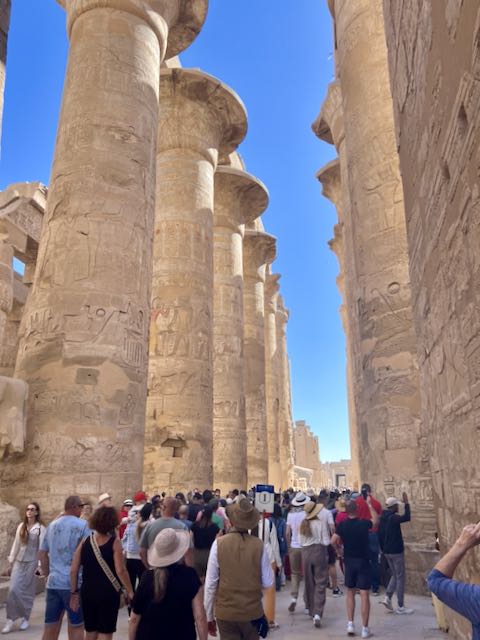
The number and size of the columns was amazing. Originally the entire space would have been covered with a stone roof, only a small portion of the roof remains. Virtually all of the columns were carved and had an abundance of hieroglyphic writing.
The complex is a vast open site and includes a number of structures and monuments. It is believed to be the second most visited historical site in Egypt; only the Giza pyramid complex near Cairo receives more visits. Consisting of four main parts, only the largest is currently open to the public.
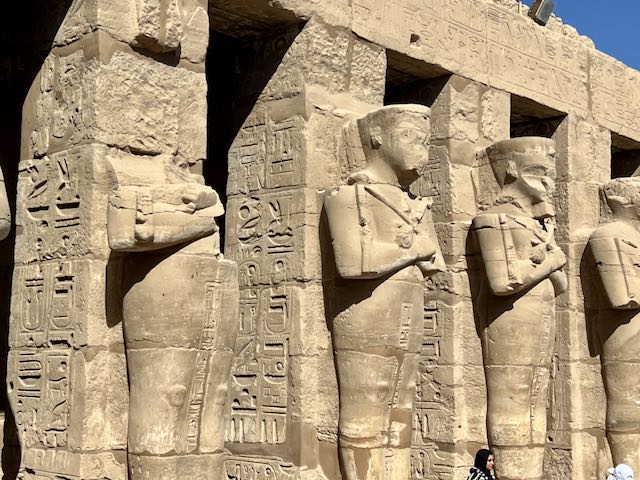
The key difference between Karnak and most of the other temples and sites in Egypt is the length of time over which it was developed and used. Construction of temples started in the Middle Kingdom and continued into Ptolemaic times. Approximately thirty pharaohs contributed to the buildings, enabling it to reach a size, complexity, and diversity not seen elsewhere. Few of the individual features of Karnak are unique, but the size and number of features are vast. The deities represented range from some of the earliest worshiped to those worshiped much later in the history of the Ancient Egyptian culture.
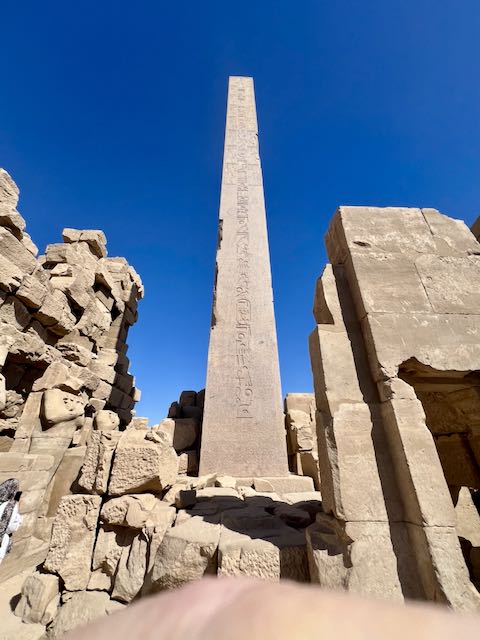
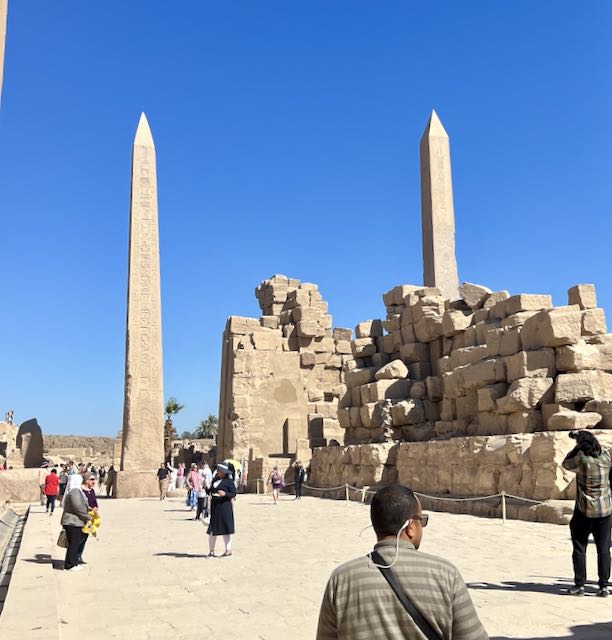
Obelisk’s are made from solid granite while most of the other structures are made from sandstone or limestone
The Great Hypostyle Hall, where we spent a good deal of time, is about an area of 50,000 sq ft with 134 massive columns arranged in 16 rows. One hundred and twenty-two of these columns are 33 ft tall, and the other 12 are 69 ft tall with a diameter of over 9.8 ft. The architraves, on top of these columns, are estimated to weigh 70 tons. There is an unfinished pillar that indicates how it would have been finished with finishing and carvings being completed from the top down. It was suggested blocks were stacked to make columns and then sand put around them so the workers could get to the top to finish smoothing the columns and make the carvings. As they worked down, the sand was removed.
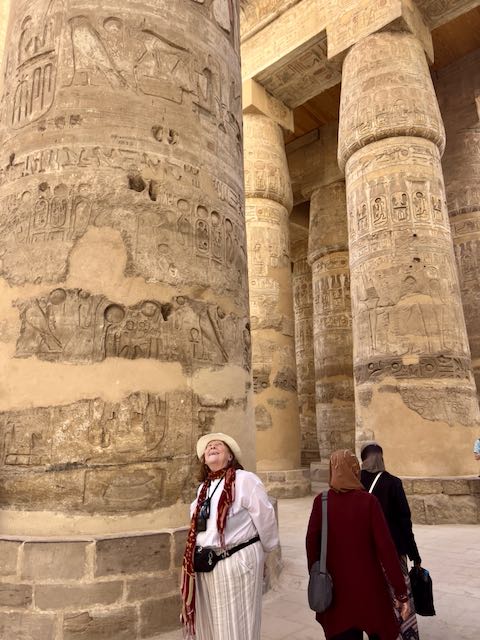
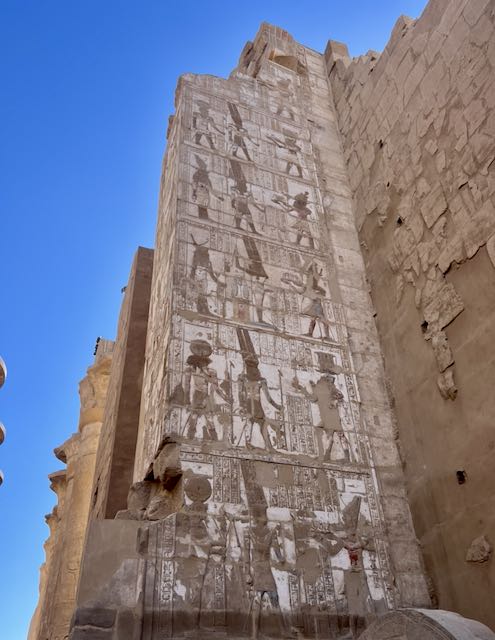
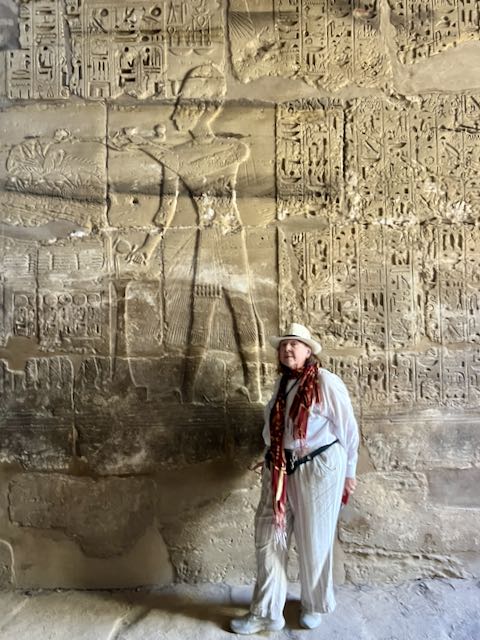
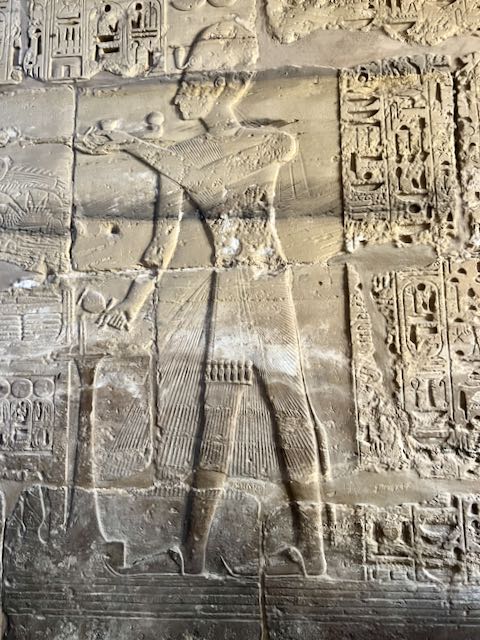
Many depictions of Gods and Kings on the walls. Here one is making an offering.
It is amazing to see all of these structures with the carvings and some color visible after all the centuries they have been in place.
After completing our visit to Karnak we headed to our boat, the S.S. Sphinx. Our home for the next week entered into the UniWorld fleet in 2021 and can accommodate as many as 84 guests. However, our current group was 55 or so, lots of room to move around.
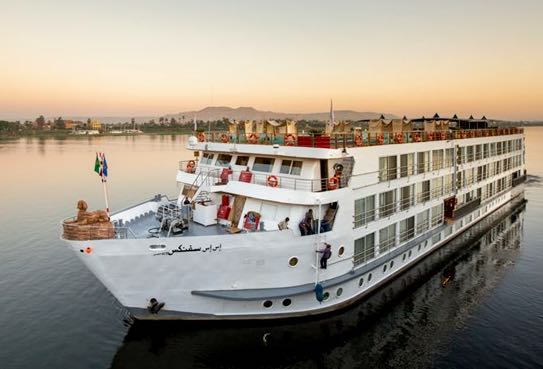
While there is a pool on the sundeck, we never took a dip while we were on board. However, we enjoyed multiple sunny afternoons sailing on the Nile from this area. A grilled lunch was prepared for eating on the sundeck during one sailing.
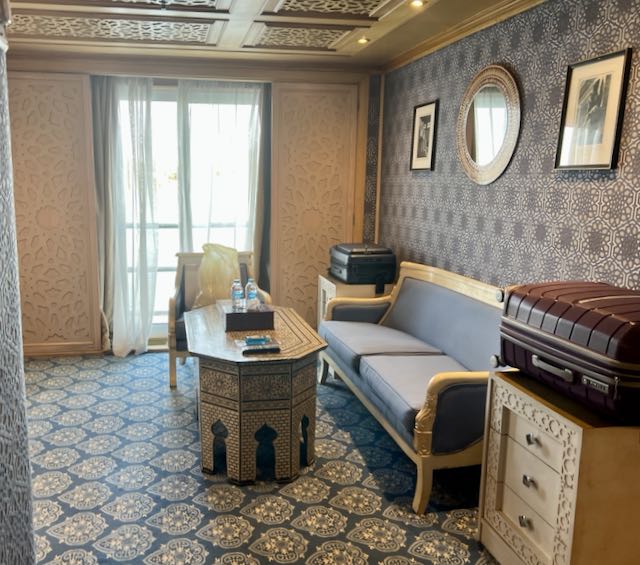

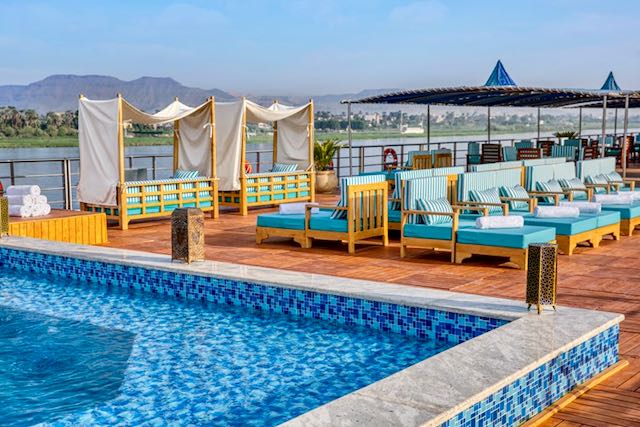
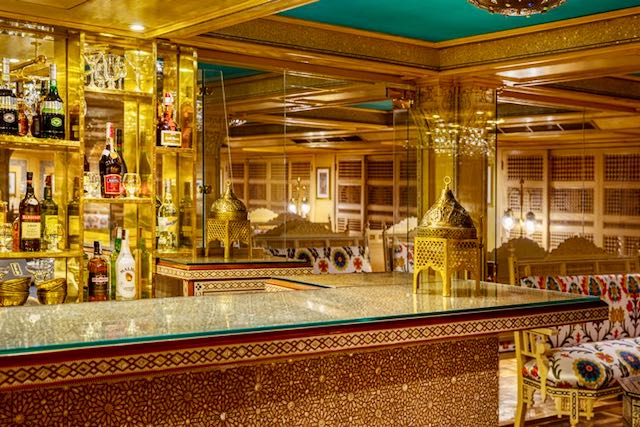
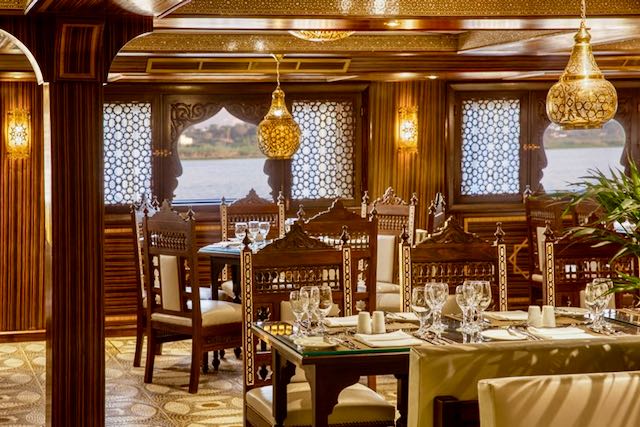
It is highly rewarding for an Egyptologist to receive such comprehensive contributions from enthusiasts such as Mr. David Lee. Your writing and storytelling skills are exceptional. Thank you for sharing this insightful blog.
I am so pleased you are having such wonderful experiences!
When we were there the temples only had a few tourists. Is that still the case?
It was winter break for the locals so yes, there were several temples with some crowds. However, our tour had some special access to the sites really well planned and executed.
Great to see some of what you’re enjoying. As always, my favorites are of you two. Wonder where you valentines will be on 2/14?💘💝
When we were in school there were a number of movies where pyramids were included as well as showing how many people it took to move these stones. Interesting to see the real thing. Wonderful journey.